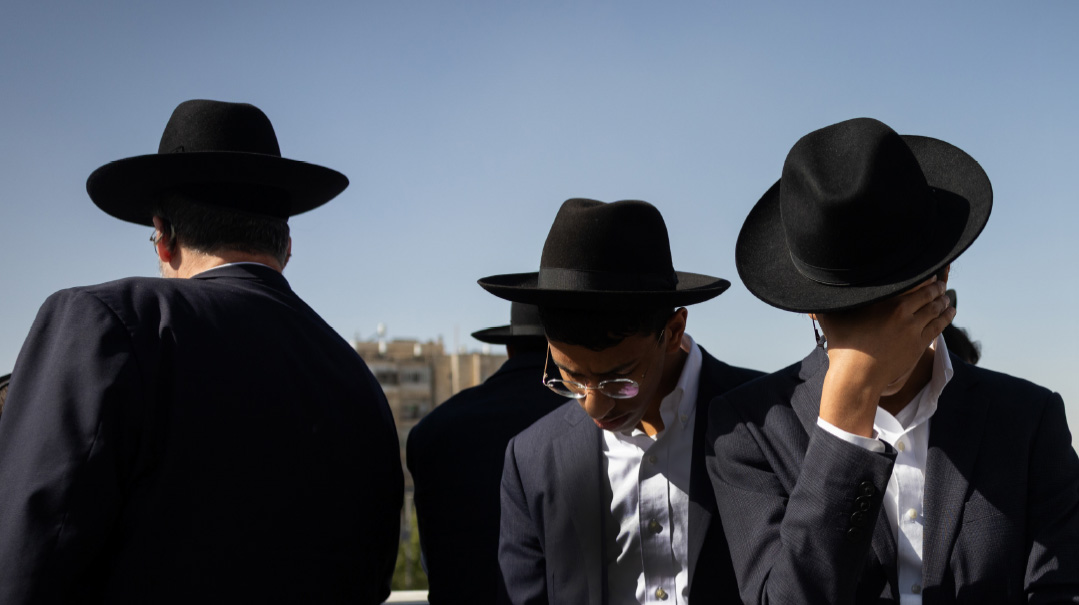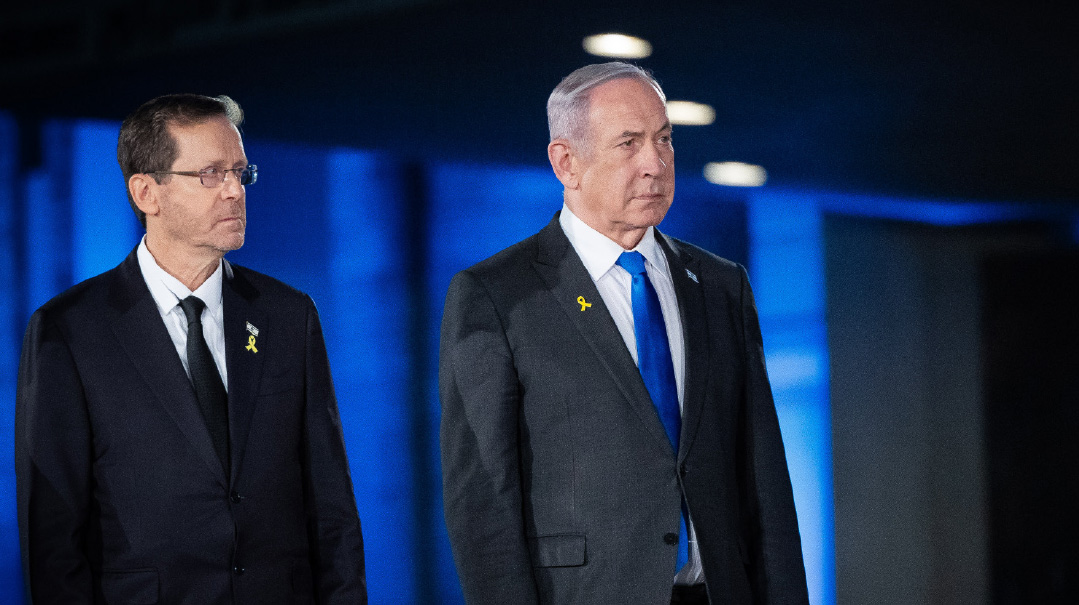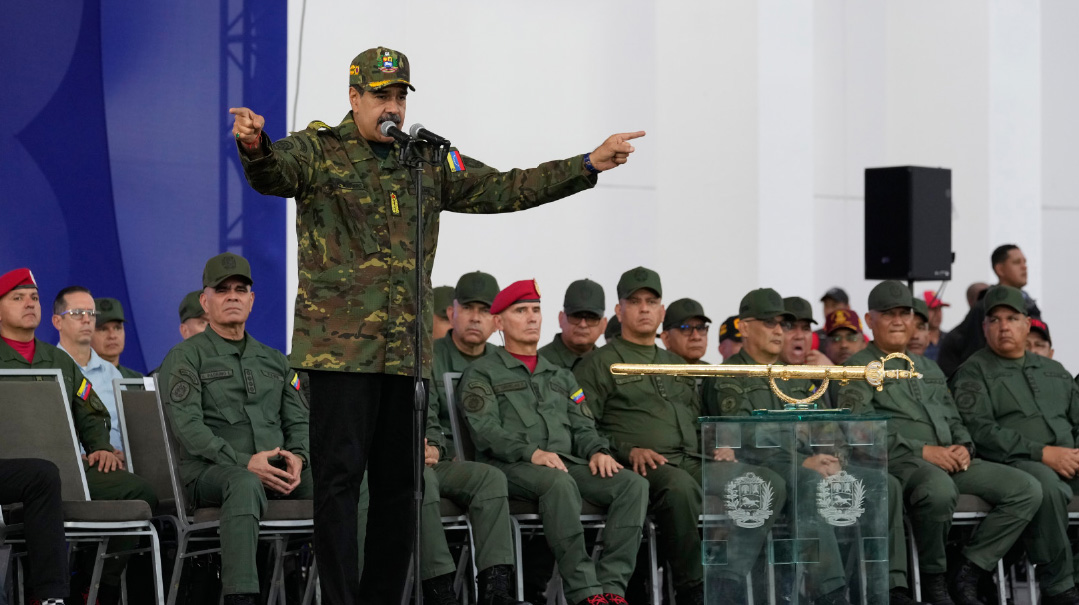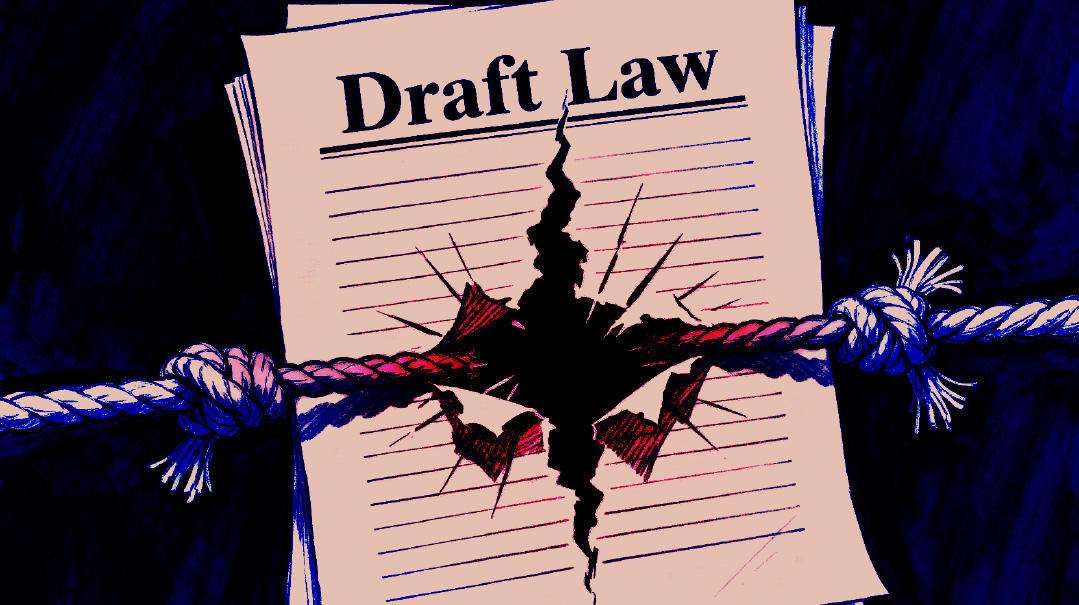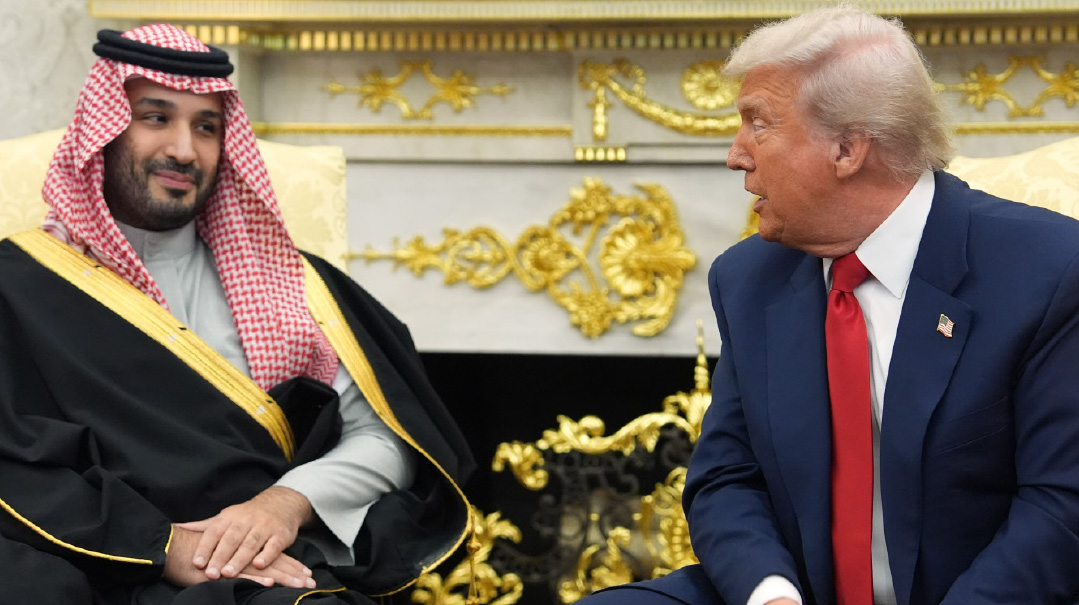X’ed Out
| March 18, 2025A midnight tweet got free-speech scholar Ilya Shapiro canceled in a woke witch hunt
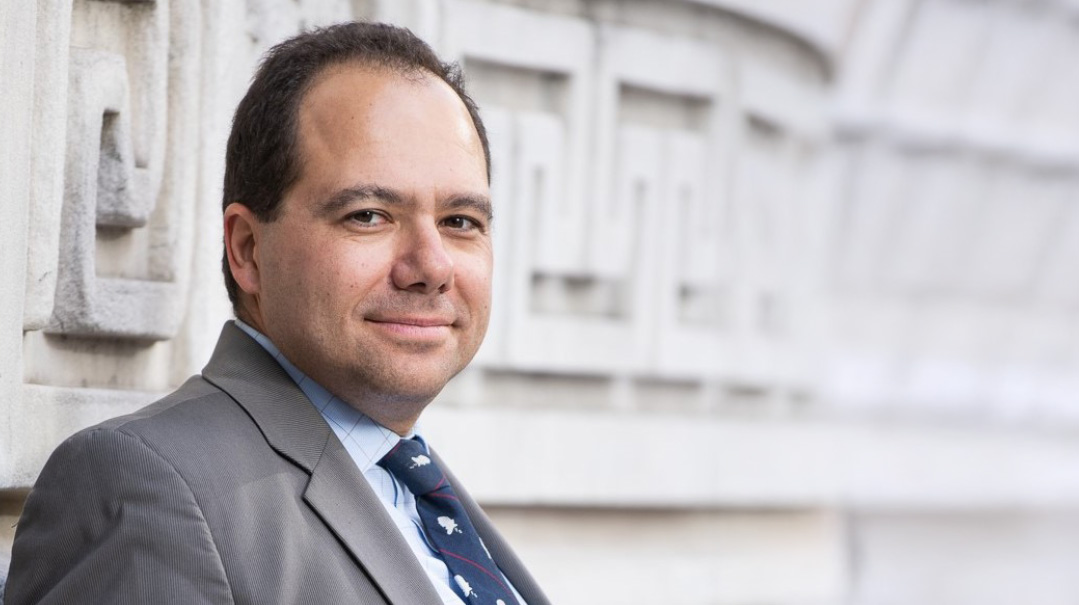
Photos: AP Images
At the height of cancel culture, free speech expert Ilya Shapiro lost his job as a university lecturer for a tweet. Now, as the Trump administration cracks down on the pro-Hamas extremism on campus, he’s taking aim at the miseducation of America’s elite
Ilya Shapiro, a quiet legal scholar known as a fierce free speech advocate, never planned on testing his principles firsthand.
Yet in January 2022 — with Donald Trump’s election victory and the exposure of moral bankruptcy at American universities still a long way off — that’s exactly what Mr. Shapiro had to do. He fell victim to the censorious “cancel culture” regnant at American universities after a tweet he posted. He went from being a fairly anonymous academic to having his name associated with the ravages of the DEI (diversity, equity, and inclusion) complex, and with the rot pervading American law schools.
“I felt my professional life, if not my whole life, crumbing over a tweet,” says Mr. Shapiro. “My parents’ sacrifices, bringing me from the Soviet Union, and decades of my hard work were suddenly at risk.”
Over his 15 years as a constitutional expert at the center-right libertarian Cato Institute in Washington, D.C., the Russian-born Shapiro built a strong reputation with his writing, lectures, and legal briefs. In late 2021, he accepted an offer to lead Georgetown University’s Center for the Constitution.
Five days before Mr. Shapiro was scheduled to begin his new job, Supreme Court Justice Stephen Breyer announced his intention to retire. President Joseph Biden had campaigned on the promise that with the next Supreme Court vacancy, he would nominate a black woman.
As a well-known commentator on high court matters, Ilya Shapiro spent much of that day fielding media queries about Justice Breyer’s legacy. And because Mr. Shapiro was known as a dedicated foe of identity-based hiring policies, he was also asked about Biden’s selection criteria.
Before retiring for the evening, it occurred to Mr. Shapiro that President Biden’s criteria eliminated a candidate who would have otherwise been the best pick. He decided to share his thoughts in a social media post.
“Objectively best pick for Biden is Sri Srinivasan, who is a solid prog & v smart. Even has identity politics benefit of being first Asian (Indian) American. But alas doesn’t fit into the latest intersectionality hierarchy so we’ll get a lesser black woman.”
Tweet sent, Shapiro put his phone away for the night, blissfully ignorant of what was about to happen. While he slept, the progressive Twittersphere erupted, casting his use of the phrase “lesser black woman” as a racist and misogynist epithet.
In the morning, he saw the storm the statement caused, apologized for his “inartful” choice of words, and clarified the meaning that was obvious to any good-faith reader: Anyone other than Srinivasan, the ideal candidate, was by definition “lesser.” In this case, the lesser candidate would likely be a black woman, due to President Biden’s commitment.
Noisy Exit
But in the merciless climate of peak woke, social-media-dwelling puritans had only landed the first blows in Mr. Shapiro’s ordeal. Georgetown University, pushed by faculty and student activists, paused the start date on his new position. Law school dean Bill Treanor called the tweet “appalling” and “damaging to the culture of equity and inclusion.”
The university then switched to passive-aggressive mode. Instead of either outright rescinding their offer to Mr. Shapiro or simply allowing him to begin his new job, Georgetown placed him on paid leave and kicked the can over to the school’s Office of Institutional Diversity, Equity, and Affirmative Action (IDEAA).
Thus began a process that would take several months and the engagement of a high-ticket law firm — all to investigate a one-paragraph social media post. Mr. Shapiro quickly discerned that more was at play than determining whether his tweet was protected by Georgetown’s free-speech policies.
“You could have passed this to a junior law professor and dealt with it in ten minutes,” he says. “Initially, I took it quite seriously. But then, when there was no decision for weeks and weeks, I saw the whole thing was a farce.”
If the American public needed further confirmation that something was very seriously wrong on the country’s university campuses, and that the very institutions dedicated to free inquiry and open debate had become anything but — it came with Mr. Shapiro’s case.
After a months-long ordeal, the mild-mannered academic made what he terms a “noisy exit,” publishing an open resignation letter in the Wall Street Journal and giving media interviews. After spending his working life in academia, Ilya Shapiro had embarked on a different path as a result of this saga: He became a strident critic of those very institutions. That journey marked a new milestone in January with the publication of his book Lawless: The Miseducation of America’s Elites, which sounds the alarm about “woke” ideology pervading the institutions training the next generation of attorneys.
Less than two years after Mr. Shapiro’s Georgetown travails, the Hamas massacre of 1,200 Israelis in the Gaza Envelope on October 7, 2023, unleashed an explosion of radical anti-Israel sentiment on campuses, leaving many Americans aghast at what decades of progressivism has wrought in academia. Campus progressivism then seemed at its zenith.
Since then, President Donald Trump’s victory and his war against DEI have many thinking that the sun might be setting on wokeism. The Trump administration’s threat to Columbia University’s federal funding over the institution’s failure to adequately address anti-Semitism in last year’s violent campus protests, and its detention of Mahmoud Khalil — a Syrian pro-Palestinian activist and former Columbia student who led those protests — with the goal of deporting him, signal that a new sheriff is in town. Some observers, however, are skeptical as to whether these political winds will be strong enough to uproot the progressive powerbase in America’s institutions.
So, three years on from the late-night tweet that changed his life, Ilya Shapiro’s experience may be — depending on who you ask — either a relic of the past, or a warning flare illuminating a deep rot at universities that isn’t going away.
From Russia with Hope
Ilya Shapiro’s Kafkaesque experience was the precise opposite of what his parents hoped to find when they arrived in the West, after finally being allowed to leave the Union of Soviet Socialist Republics.
The Shapiros were Russian Jews who had suffered no shortage of hardships under Soviet rule. During the iron-fisted rule of Joseph Stalin, Mr. Shapiro’s grandfather had foreign ties that made him suspect; he was arrested one day and never heard from again. Ilya Shapiro’s father, Leonid, and his grandmother were then sent to Siberia for several years, only returning to Moscow when Nikita Khrushchev took power.
Both of Mr. Shapiro’s parents eventually graduated from the prestigious Mendeleev Institute of Chemical Technology, becoming ceramic engineers. When the doors of emigration cracked open slightly, they applied for visas, and in 1981 they were able to leave together with their young son and two suitcases apiece.
With an eye toward settling somewhere in the West, they moved into temporary housing outside of Rome.
“My parents called it their ‘Roman holiday,’ ” quips Mr. Shapiro. “It’s unimaginable to me. They quite literally left everything behind and were there in Rome, stuck between two worlds.”
After four months, the Shapiros were granted entry to Canada and moved to Toronto. After a few months of working to learn English and adapt to life in a very different environment, Leonid Shapiro was hired by a defense contractor, and the family moved closer to his work, in a small town about an hour and a half from Toronto.
Ilya excelled in school, and from a young age he realized that, as he puts it, he “preferred life, liberty, and the pursuit of happiness to Canada’s ‘peace, order, and good government.’ ”
After obtaining degrees from Princeton University and the London School of Economics, followed by a J.D. from the University of Chicago, Mr. Shapiro spent several years in private practice and did some government work before joining the libertarian Cato Institute’s think tank.
“I had no idea what kind of lawyer I wanted to be,” says Mr. Shapiro. “Frankly, I still don’t. I just wanted to get paid for doing fun work.”
During his time at Cato, Mr. Shapiro became a national figure for his writing on constitutional law and submitting briefs on individual liberties and federalism.
“Growing up hearing the stories I did made me fervently anti-Communist and pro-freedom in all of its dimensions,” he says. “I was always impatient with nascent authoritarians.”
After his Twitter kerfuffle scuttled his Georgetown plans, Mr. Shapiro became director of constitutional studies at the Manhattan Institute, a moderate conservative think tank focused on free markets, limited government, law enforcement, and urban planning.
Having lived an “only in America” story, Mr. Shapiro traces woke anti-Americanism to a failure of the nation’s education system to accurately teach its own story.
“It’s wholly a misunderstanding of America, trying to substitute the French Revolution for America’s revolution and promoting the idea that you have to go back to ‘year zero’ and rebuild everything because of the country’s original sins,” he says. “I think the K-12 educational system in this country has contributed to not having a firewall against that type of thinking.”
As with most Jews from the former Soviet Union, the Shapiros had very little Jewish background. Mr. Shapiro estimates that the last family members to practice Judaism lived in czarist times. Growing up as he did in a town with no other Jews, Mr. Shapiro’s youth, too, contained little exposure to Jewish life or learning.
It wasn’t until moving to Washington as an adult that he connected with Jewish communal activities, such as programming for young professionals, a visit to Israel, and a Chabad adult “bar mitzvah” program at age 31.
“After I got married and started having kids, and then much more so after October 7, I said, ‘Okay, I have to take this a little more seriously,’ ” says Mr. Shapiro.
The nine- and seven-year-old Shapiros attend a Chabad-run Hebrew school near their home in northern Virginia, and his twin two-year olds have yet to start their educational journey.
Red Flag on the Ivory Tower
If that journey takes any of the Shapiro children to American universities, they will likely have been made aware of where all the landmines lie — and unfortunately, there are plenty of those. And in its “Long March” through the institutions, the far left saw law schools as the biggest prize.
The progressives won some early victories in the 1980s and early ’90s, promulgating new theories like critical race theory (CRT) in law departments. But after a brief heyday, this fad largely faded from the mainstream.
“There was no inkling of this when I was in law school just over 20 years ago,” says Mr. Shapiro. “These post-modern theoretical constructs had been relegated to some corner of the sociology department. But then about a decade ago, they came roaring back with a vengeance.”
Mr. Shapiro says a key motivation for him in publicizing his story and subsequent research is that what goes on in law schools reverberates throughout society.
“When an academic department goes rogue, that’s unfortunate for the accumulation of human knowledge, but when a law school is taken over by illiberal winds, that has real practical consequences,” he says. “Lawyers are the gatekeepers of our political and legal institutions. They’re overrepresented among our elected officials, they’re our senior executives.”
As long ago as 1951, conservative thinker William F. Buckley Jr. published G-d and Man and Yale, critiquing the school’s domination by secularist and collectivist ideas. In the 1960s, colleges became the epicenter of protests against the Vietnam War. There is a temptation to view that period as the beginning of the far left’s complete conquest of the academic realm. Mr. Shapiro argues, however, that the forces currently at work in higher education are not as a continuation of that era, but a break from it.
“Those original hippies from the Berkeley Free Speech Movement of the ’60s would be considered by today’s radicals to be retrograde white supremacists,” he says. “What’s happening now is not about a debate between right and left, or, in law schools, between originalism versus ‘a living Constitution.’ This is about undermining the legitimacy of the law itself… the idea that all of our current structures, systems, and rules are hopelessly imbued with racism, misogyny, and so they all need to be deconstructed and reconstructed in a better way.”
The takeover of universities by the DEI clerisy happened slowly and then all at once. In the 1990s, “political correctness” seized American culture, making a wide range of terms, views, and subjects of humor verboten. Although it quickly became an object of ridicule in much of society, it conclusively won the day on college campuses, where the ground had been furrowed by ’60s radicalism. Students suddenly found themselves in violation of university “speech codes” and subject to discipline. Although several of them subsequently won court battles against their schools, Mr. Shapiro says a “chilling effect” had taken root.
The Tail Wagging the Dog
The chill extended into the 2010s, when universities pioneered the incorporation of DEI offices into their organizational pyramids and gave them an increasingly influential role.
“For a long time now, we’ve had a higher rate of growth in non-teaching staff than in faculty,” says Mr. Shapiro. “And that’s a problem not just because of inefficiency, but also because these administrators tend to be far more to the left than even the faculty. And they’re not dedicated to values like academic freedom and scholarship.”
Schools began requiring applicants for faculty positions to fill out “diversity statements.” The University of Pennsylvania requires applicants to pen an essay on how they “have contributed, or will contribute, to diversity, equity, and inclusion, in your academic life.”
Meanwhile, DEI language surfaced in every corner of academia. In 2021, Cornell University issued a guide on “how to be an anti-racist library guide.” In the wake of George Floyd’s death, a Christian clergywoman at Stanford University wrote that she had “no wisdom to offer for this moment other than a confession of my own complicity in systems of anti-black racism… I feel called to offer a public examination of my own whiteness.”
Student orientations became the domain of DEI officers indoctrinating freshmen with woke values and then serving as an enforcement body for offenses against those orthodoxies.
“They’ve become the tail that wags the dog,” says Mr. Shapiro. University administration gives them “incentives to grow their authority and budgets, which means DEI offices manufacturing outrage and creating racism.”
It’s harder to manufacture outrage, of course, when students have been frightened into silence. So then DEI officers are forced to lower the bar, and begin policing for what they label “microaggressions.” Georgetown’s DEIA office forbids “commenting on a BIPOC [black, indigenous, person of color] person’s speech, such as ‘you are so articulate’ ” and “misgendering a student or colleague.”
In 2018, Columbia University social work professor Matthea Marquart reported her entire class for using what she deemed “microagressive” terms in an online forum. The class was subsequently instructed to read two lengthy articles on race. The next time the class met in person, the instructor segregated students into one group for whites and another for “people of the global majority.”
In this “witch hunt” atmosphere, Mr. Shapiro says most in the academy lack the courage to publicly question DEI offices’ actions.
“Educational leaders, deans, presidents, chairs, kowtow to these officials lest they be canceled themselves,” he says. “Most people, whether faculty or students, just want to keep their heads down and not get caught in the crossfire. That leaves a campus culture where this illiberal mob is able to dictate.”
Mob Rule
Ilya Shapiro uses the term “illiberal mob” advisedly, indeed from personal experience. As he discusses at length in his book, student activists fight to prevent speakers with opposing opinions from coming to campus, or noisily disrupting the event when they do.
About a month after his tweet incident, Mr. Shapiro was invited to speak at the Hastings College of Law in San Francisco by the school’s Federalist Society. (In a sign of the times, administrators decided that its founder, Serranus Clinton Hastings, was offensive to progressive sensibilities and removed his name from the school.)
Mr. Shapiro had been invited to debate progressive law professor Rory Little on Judge Ketanji Brown Jackson’s nomination to the Supreme Court. Mr. Shapiro was greeted on arrival by an overflow crowd of raucous protestors. The crowd banged on tables and chanted when Mr. Shapiro tried to speak, making it impossible for him to be heard. Although protestors were warned to respect free speech rules, they continued, paying no consequences.
Professor Little even banged and chanted along with the protestors, saying subsequently that “statements of diversity and inclusion ring hollow when salient issues of racial equity are ignored or discounted in the service of prioritizing the ideal of free speech.”
An even uglier scene unfolded in March 2023, when conservative federal appeals court Judge Kyle Duncan came to speak at Stanford’s law school. Before he arrived, activist groups condemned the invitation extended to a speaker holding traditionalist social views and demanded the event be canceled or moved far off campus. When Judge Duncan did arrive, he was greeted by screaming protestors who not only disrupted his talk but made threatening and vulgar comments aimed at intimidating him and the organizers.
The protestors’ self-righteousness in these episodes masks an extreme emotional fragility, Mr. Shapiro says, one fomented by both their education and their upbringing.
“A lot are victims of ‘snowplow parenting,’ parents removing all adversity from kids’ lives,” he says. “One of the impacts of that is, they don’t know how to deal with ideas that are new or challenging. Then they get to colleges, which are full of not only left-wing radicalism but safety-ism, and all-new ways of defining harm and harassment pushed by the burgeoning student services bureaucracy.”
The turning point for wokeism came perhaps during the campus anti-Israel protests in the wake of the October 7 attacks. Coming on the heels of reports of Hamas atrocities, scenes of student and faculty activists chanting “from the river to the sea, Palestine will be free” and “globalize the Intifada” and violently taking over buildings, committing acts of vandalism, and intimidating fellow students, all appalled mainstream middle Americans.
When presidents of three leading universities at a Congressional hearing were unable to articulate whether calling for the genocide of Jews violated their institutions’ rules — with two of them forced to resign in the aftermath — confidence in higher education dropped to a low point. Campus far-left activists and their administration enablers had handed a cudgel to their political opponents.
“October 7 and its aftermath elevated the crisis in higher education that was already there into a national discourse,” says Mr. Shapiro. “The inability to articulate basic classical liberal values and missions of universities cost them a lot of public trust… It was remarkable, certainly to me, and I think to the general public as well, that the heart of anti-Semitism in this country is at our most educated and so-called progressive places.”
The rhetoric employed by anti-Israel activists revealed the degree to which Frantz Fanon, who wrote that “decolonization is always a violent phenomenon” in his 1961 leftist gospel Wretched of the Earth, had poisoned the discourse. When some Harvard students condemned Hamas’s brutal rampage, a fellow student wrote on social media, “I read Frantz Fanon in no less than four classes here… and yet you all side with the colonizer?”
In the contemporary leftist rubric that breaks all conflicts down into “oppressor” and “oppressed,” these viewpoints often turn on whites, males, or Westerners, but Israel emerges as low-hanging fruit.
“All people’s complaints get transposed onto this conflict,” says Mr. Shapiro. “When the only tool you have is a hammer, everything becomes a nail, so they see no difference between the Jim Crow South and Israel’s supposed oppression of Palestinians.”
Paying the Piper
It was perhaps inevitable that such an outrage against common sense would trigger a backlash. In the three years since Mr. Shapiro’s Georgetown saga, conservative media figures and politicians successfully turned the tables on DEI, cancel culture, and other products of leftist thinking. That resistance won a resounding victory with the election of President Trump, which Mr. Shapiro labeled a “vibe shift.”
“I think the pendulum is swinging back in society writ large,” he says. “Normal people are not willing to go along with crazy gender theories and radicalism. They’re like, ‘This makes no sense, and it’s harming us.’ ”
That swing has taken various forms. One of President Trump’s “day one” executive orders reversed a slew of Biden administration DEI policies, effectively pulling the plug on a parallel bureaucracy instituted across the federal government that took charge of hiring and human resources.
Leading corporations that had instituted DEI policies began backing away after President Trump’s victory. Walmart rolled back many moves hastily put in place in the summer of 2020. Farm-equipment manufacturer John Deere’s investors voted overwhelmingly to end DEI efforts. Other corporate giants, including Harley-Davidson, McDonalds, and American Airlines, followed suit.
In the heavily insulated world of academia, change will likely come far slower, if at all. But the Trump administration has already made several moves to force change.
The Department of Education is investigating 60 schools for violating the rights of Jewish students by failing to protect their equal access to facilities and study as guaranteed under the Civil Rights Act’s Title VI.
Square in the administration’s crosshairs is Columbia. Following through on threats President Trump made on the campaign trail, $400 million in federal grants to the school were canceled, due to its “continued inaction to protect Jewish students form discrimination.”
These Trump administration moves will meet legal challenges, but Mr. Shapiro says the administration is on solid legal ground.
“The violations of Title VI are pretty rampant, in addition to their suppression of free speech,” he says. “The remedy is simple. These schools have good polices on the books about harassment and speech, they just haven’t been enforcing them.”
Mr. Shapiro also believes actions aimed at combatting anti-Semitism found a nexus with President Trump’s anti-DEI campaign, since these offices are “antithetical” to the civil rights protections required of federal grant recipients.
Raising the ante on its crackdown against campus radicalism and fulfilling another Trump campaign promise, immigration officials detained and initiated deportation proceedings against Mahmoud Khalil, the Syrian Columbia student and green card holder who led anti-Israel protests at the school. Officials allege that Mr. Khalil violated terms of entry to the United States by expressing support for Hamas, a recognized terrorist organization.
President Trump said there would be more such deportation cases in the future. And as many observers pointed out during the anti-Israel protests — that many student leaders are visa holders from Muslim countries — the administration’s move could cast a wide net.
Mr. Shapiro cowrote an opinion piece in the New York Post with a Manhattan Institute colleague supporting the deportation. He added that such actions could move college administrators to take stronger action against radicals and help the public better understand the dangers that have been allowed to thrive in higher education.
“In the educational sector, it’s different because there’s no natural pushback mechanism, no right wing,” Mr. Shapiro says. “It’s just the left hand and far-left hand, so they’re going to be dragged kicking and screaming to any kind of reform.”
There have been some signs of movement from what Mr. Shapiro terms “savvy educational leaders.” He cited Princeton Law School dean Keith Whittington’s initiation of a new center for academic freedom and hiring of a former clerk of conservative Justice Samuel Alito, as well as significant administrative changes initiated by Yale Law School dean Heather Gerken.
Some other schools, likely with an eye toward protecting federal funding, have changed the names of DEI departments but kept their changes mostly cosmetic, still hewing to their original goals and policies.
Even with a robust push from the federal government, Mr. Shapiro says that lasting change will only come from a combination of legislation and pressure from media and donors who push schools to be more attentive to societal trends.
“Outside pressures are the mechanism through which these things could be turned around,” he says. “I’m not going to say I’m optimistic, but I’m less pessimistic than I was when I left Georgetown two and half years ago.”
(Originally featured in Mishpacha, Issue 1054)
Oops! We could not locate your form.

